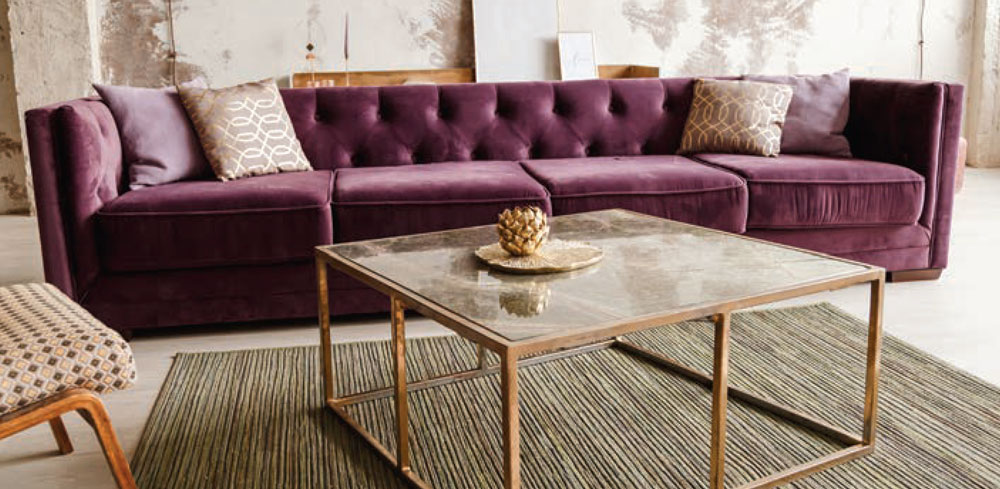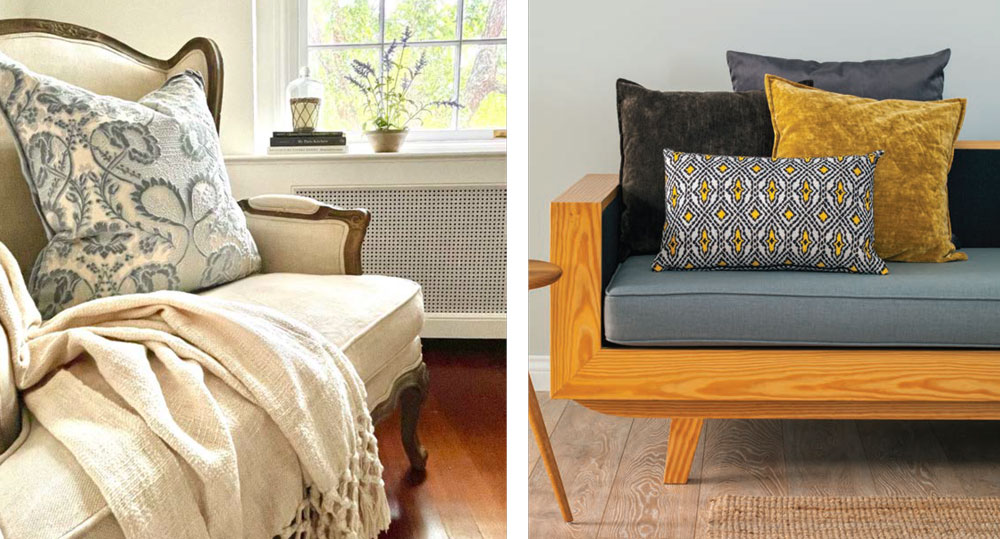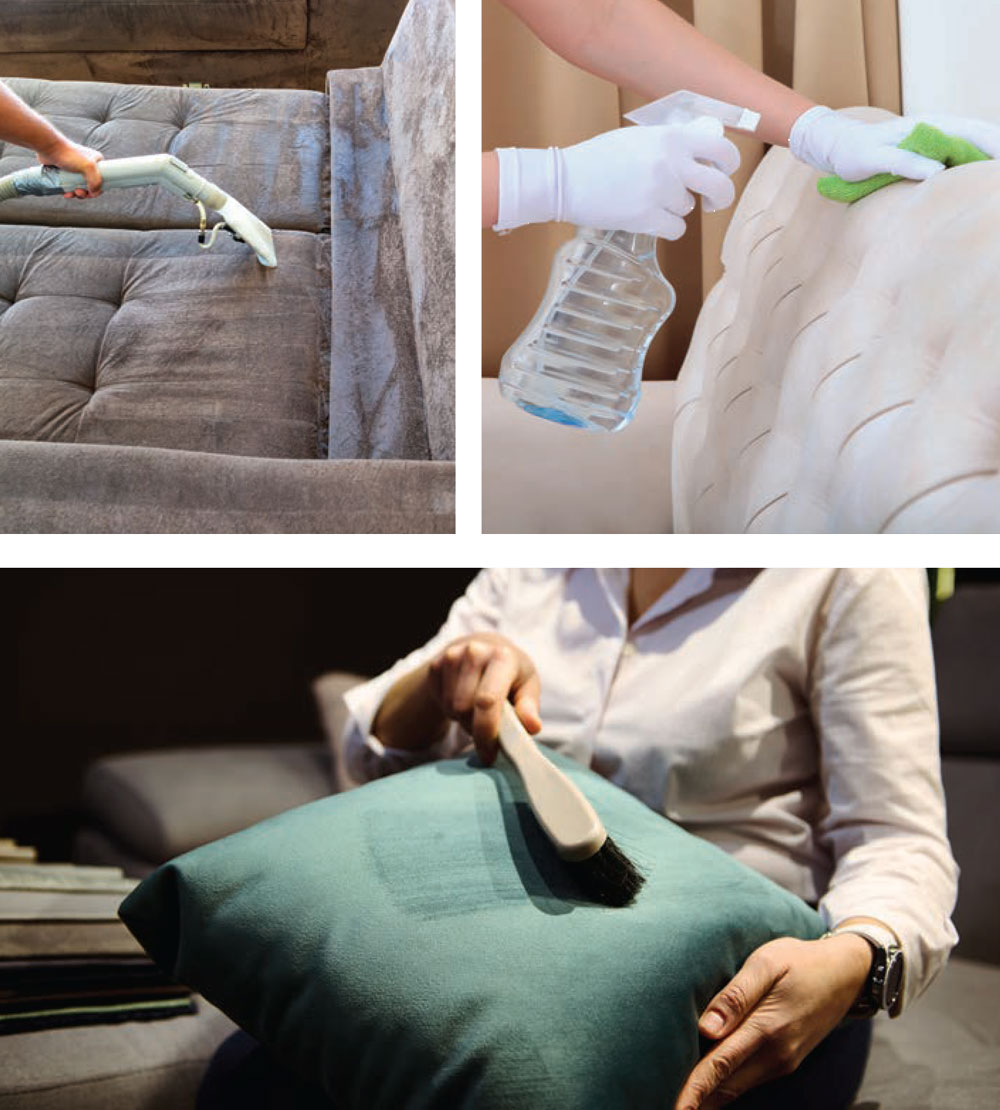Soft as Velvet | How Velvet Can Add Glamour to Your Home
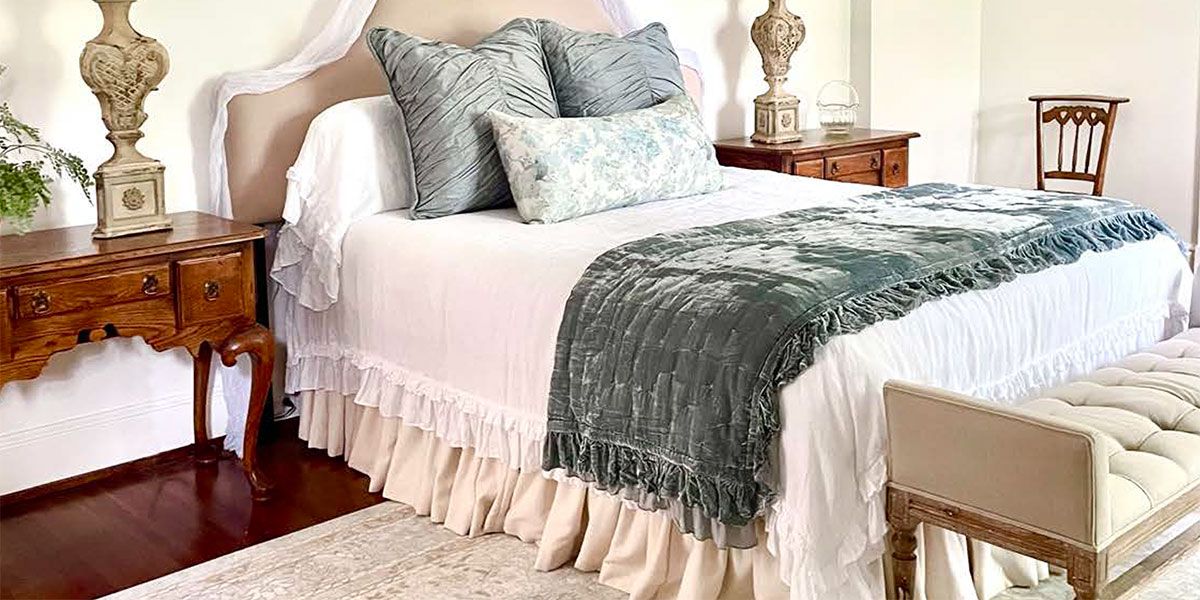
Velvet décor is trending in home design, but luxurious velvet has never truly gone out of style. For centuries, velvet has captured the zeitgeist of the time, whether in Victorian England, the Antebellum South, or beyond. Who can forget Scarlett O’Hara’s sumptuous green velvet dress wrought from beleaguered Tara’s curtains in Margaret Mitchell’s Gone with the Wind? Originally made with fine silk, velvet epitomized opulence and wealth, but today’s velvet, composed of natural and synthetic fibers, is more affordable and accessible. You can infuse glamour into your home by incorporating silky-smooth velvet with rich hues into your furniture, window treatments and accent pieces.
Velvet 101
Velvet refers to the plushy textile’s structure, not its fabric. Velvet is characterized by a dense pile of evenly cut and tufted yarn, the soft surface upon which your hand glides when you touch it. It’s woven on a hand or power-operated loom that interweaves warp and weft yarns and simultaneously produces two layers of connected fabric. Warp yarns stretch lengthwise on a loom while weft yarns thread crosswise. Velvet displays at least two sets of warp yarn and one set of weft yarn, a fitting feature for the metaphorical “warp and weft” or mainstay of the textile industry.
Yarn fibers determine the velvet’s luster and softness. Though pure silk velvet is still revered for its exquisite beauty, velvet is now typically a blend of silk, cotton, linen, wool, mohair and synthetics.
For Kathy Potts of Decorating Den Interiors in Forest, polyester fibers add performance, durability, and affordability to velvet’s elegance and glam. She says, “When velvet first came out, it was so expensive that only the rich could afford it. Now that most velvet is polyester, it’s more affordable as well as wearable and cleanable.”
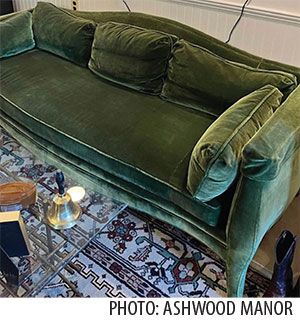 Velvet history
Velvet history
Silk velvet likely originated in the Middle and Far East, but the silk textile industry reached its apogee in 16th century Italy, according to art historian Melinda Watt of The Metropolitan Museum of Art. In an MMA article entitled “Renaissance Velvet Textiles,” she notes that silk velvet was an expression of power, wealth and taste among the nobility: “During the Renaissance, luxurious fabrics made of silk and precious metal threads counted among the most valuable items owned by both individuals and the Church.”
Velvet’s appeal to the nobility extended across Europe to Britain, from King Henry VIII’s regal garb to Queen Victoria’s royal palace. Across the Atlantic, velvet reigned in Victorian and Antebellum plantation-style drawing rooms and parlors. These well-appointed settings often boasted silk velvet upholstery on settees, sofas, chairs and foot stools. Their heavy velvet window treatments were both luxurious and practical because they prevented cold air from sweeping room to room. By the 1970s, Elvis Presley reinvented velvet into an energizing pop culture kitsch, reflected in his bejeweled, velvety outfits and Graceland’s storied red velvet living room sofa and blue velvet dining room curtains.
VELVET CARE
- Differing velvet fibers require unique cleaning methods, but a consistent cleaning routine will help preserve your velvet’s shine.
- To eliminate damaging dirt accumulation, gently (and regularly) brush the velvet in the direction of the nap with a velvet brush or a small brush attachment on a vacuum.
- To treat spills and stains, blot (never rub!) the fabric with a clean damp cloth dipped in a mild soap. Spot test stronger liquid cleaners to check for any pile distortions or changes.
- Synthetic velvets clean more easily than silk and rayon velvets, which are prone to pile distortion; consequently, dry cleaning is often recommended for those fabrics.
 A modern twist
A modern twist
It’s not surprising that velvet with a vintage vibe is trending among home interior designers. Sarah Krycinski, owner of Ashwood Manor Designs located in the historic Ashwood Manor in Forest, notes that velvet is making a huge comeback: “Adding velvet can upgrade your space instantly. To me, velvet feels vintage, like a past style coming back. It makes your home feel vintage but also sophisticated and modern.”
Agatha Jobling, owner of Agatha Interiors located in Ashwood Manor and available online, echoes the sentiment that vintage velvet with a modern twist is on trend. She says, “I think anything old comes around again, but, if paired with other fabrics in the room, it can have a modern, updated vibe. For a homey, casual vibe, pair it with a plaid tweed so the difference in textures gives that layered, relaxed feel. For a more formal vibe, pair it with other luxurious fabrics like silks or rich leather for a more luxurious feel.”
Potts thinks that velvet works well as a focal point in a room because it makes a statement all on its own. She explains, “I love the look of velvet because it is so luxurious and elegant. I do not think you can throw velvet everywhere: it brings a touch of richness into a space, but not every space calls for it. I love it on a tufted sofa and chair. There’s something about velvet and tufting that go hand in hand.”
Velvet glam
For many interior designers, velvet in deep hues gives glamour to a space. Potts worked with a customer who wanted glam in her room, but not so much that it was overdone. She explains, “My customer fell in love with blue velvet fabric for an accent chair, so I pulled it into the drapery as well with pretty, deep blue velvet panels right behind it. The deep blue color pulls the room together.”
Krycinski opts for thick velvet made to last, such as products offered by high-end vendor Decorator’s Best. She loves velvet with rich colors on furnishings, throws, pillows and window curtain panels: “I love a throw velvet pillow or velvet panels on window treatments that make a room pop but also are vintage and timeless.”
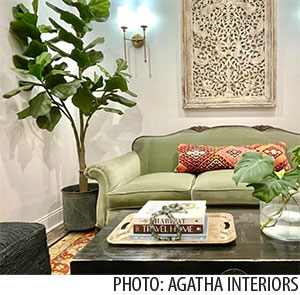 Mixing velvet with other textures sparks interest and warmth in a room. When designing an Airbnb living room in Goode, Jobling used an antique velvet green Victorian sofa as the focal point, adorned it with a lumbar pillow made from a vintage Turkish rug, and added leather pub chairs. Of the look, she says, “The luxurious velvet juxtaposed with the more rugged fabrics creates an eclectic, relaxed look.”
Mixing velvet with other textures sparks interest and warmth in a room. When designing an Airbnb living room in Goode, Jobling used an antique velvet green Victorian sofa as the focal point, adorned it with a lumbar pillow made from a vintage Turkish rug, and added leather pub chairs. Of the look, she says, “The luxurious velvet juxtaposed with the more rugged fabrics creates an eclectic, relaxed look.”
Venerable velvet
Velvet has provided the backdrop in parlors and drawing rooms where America’s historic moments took place, and it still serves as a cultural touchstone. Snow White and Santa Claus enchant us with their cheerful velvet attire while Elvis Velvet wall hangings keep the King’s legacy alive. It’s no wonder that the venerable velvet is making a comeback in home design because we all need inspiration, enchantment, and a little glam in our lives. ✦
16th Century Italy, Antebellum South, plushy textile’s structure, pop culture kitsch, Renaissance velvet textiles, silk velvet, Velvet, velvet décor, Victorian England
